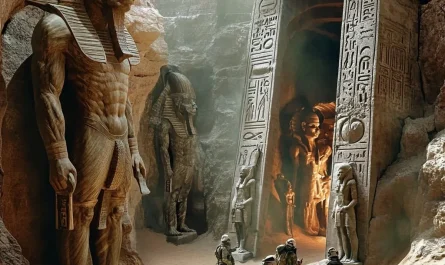On August 24, 1977, the Space Shuttle Enterprise, NASA’s first orbiter, embarked on a remarkable terrestrial journey, traveling 35 miles from Rockwell International’s plant in Palmdale, California, to Edwards Air Force Base. Hauled on a colossal 90-wheel trailer at a steady 3 mph, this slow but significant move marked a key milestone in the Space Shuttle program. Named after the iconic Star Trek vessel following a fan-led campaign, the Enterprise was a test orbiter, paving the way for America’s reusable spacecraft era with its groundbreaking design and engineering.
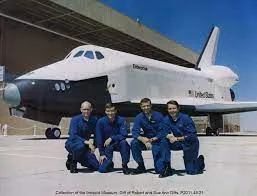
The Journey and Its Context
The Enterprise, designated OV-101, was built as a prototype to test the shuttle’s aerodynamic and handling characteristics. Constructed by Rockwell International, it rolled out of Palmdale on September 17, 1976, but lacked engines or a functional heat shield, making it unfit for spaceflight. Its purpose was to conduct Approach and Landing Tests (ALT) at Edwards Air Force Base, simulating the shuttle’s unpowered glide landings after reentry. On August 24, 1977, the 150,000-pound orbiter began its overland trek, towed by a specialized trailer across the Mojave Desert. The 35-mile journey, taking nearly 12 hours at 3 mph, drew crowds and media, who marveled at the futuristic craft lumbering through the desert under the stars.
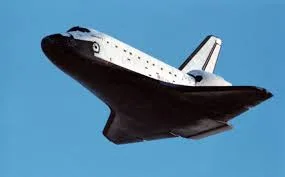
This move was a logistical feat, requiring coordination with local authorities to close roads and ensure the trailer—designed to distribute the shuttle’s weight across 90 wheels—could navigate bridges and turns. The event symbolized NASA’s bold vision for reusable spacecraft, a leap from the Apollo era’s single-use capsules.
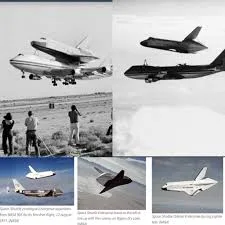
The Enterprise’s Role and Legacy
Once at Edwards, the Enterprise underwent a series of tests in 1977–78, including five free-flight landings from a modified Boeing 747 Shuttle Carrier Aircraft. Piloted by astronauts like Fred Haise (of Apollo 13 fame), these tests proved the shuttle’s glide capabilities, achieving speeds up to 470 mph and landings on Edwards’ dry lakebed runways. The data shaped the design of later orbiters, like Columbia and Challenger, which flew operational missions from 1981.
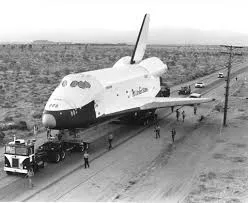
Though it never reached space, the Enterprise was a cultural and engineering milestone. Its name, inspired by Star Trek fans who petitioned President Ford, reflected public enthusiasm for space exploration. After its tests, it toured Europe and Canada in 1983, was displayed at the 1984 Louisiana World Exposition, and joined the Smithsonian’s National Air and Space Museum in 1985. Since 2012, it has been housed at the Intrepid Sea, Air & Space Museum in New York City, drawing over 1 million visitors annually.
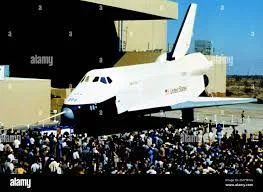
Cultural and Historical Significance
The Enterprise’s journey parallels other ingenious feats, like the Dahomey Amazons’ cornrow maps or the Jadeite Cabbage’s artistry, blending innovation with cultural resonance. Its slow desert crawl, like Samir and Muhammad’s navigation of Damascus, symbolizes determination in overcoming challenges. The shuttle program, enabled by the Enterprise, revolutionized space travel, launching 135 missions, deploying satellites like Hubble, and building the International Space Station.
Lessons for Today
The Enterprise’s legacy offers timeless lessons:

Engineering Ingenuity: Its design and testing paved the way for reusable spacecraft, inspiring modern innovations like SpaceX’s reusable rockets.
Public Engagement: The Star Trek naming campaign shows the power of community in shaping science, encouraging public involvement in space exploration.

Preserving Milestones: Like protecting the Lamassu or HIMI’s ecosystems, preserving the Enterprise ensures future generations learn from past triumphs.
A Starbound Trailblazer

On August 24, 1977, the Enterprise’s 35-mile journey at 3 mph marked the dawn of a new era in space exploration. Like the black seadevil’s rare ascent or Irfan Habib’s enduring scholarship, it captures humanity’s drive to push boundaries. From its desert trek to its test flights, this shuttle—named for a fictional starship—made the dream of reusable spaceflight real, reminding us that even the slowest steps can lead to the stars.


